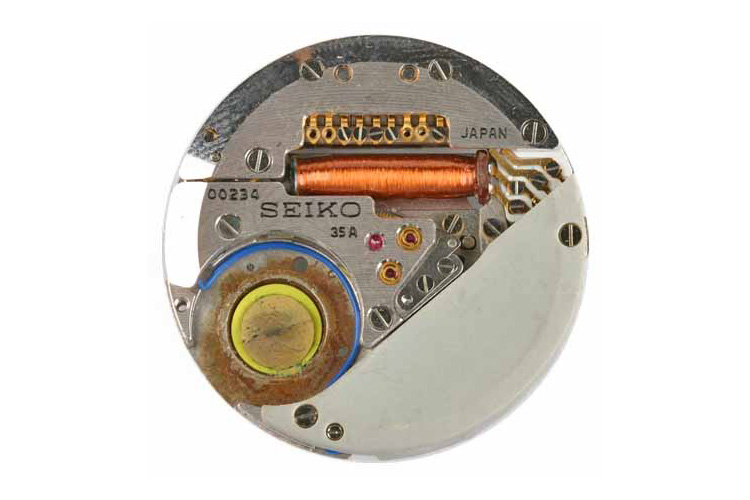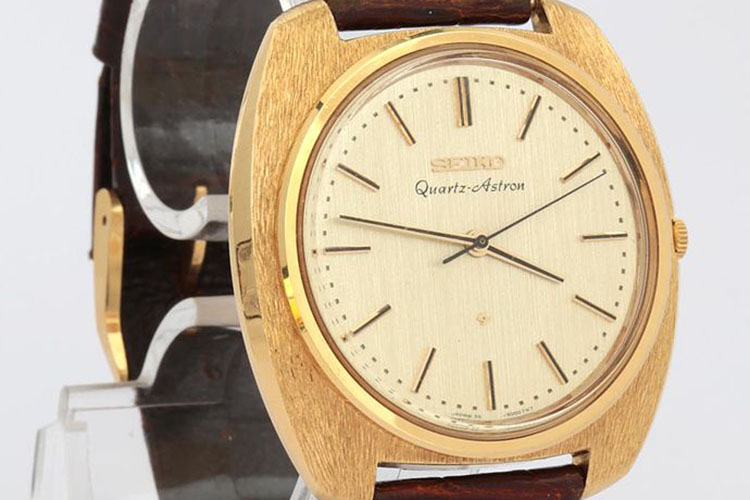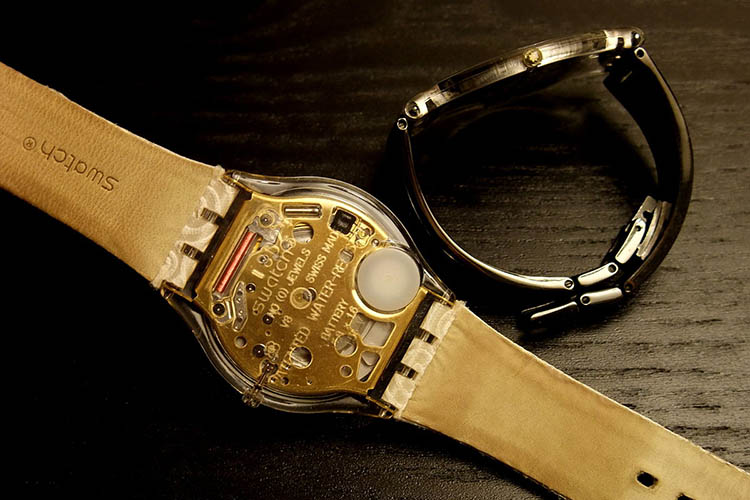
For anyone following the watch world closely, know the significance of the quartz crisis of the ’70s. This series of events led to the unexpected upheaval of the Swiss watch industry. Slowly pushing long-time watch manufactures of mechanical and traditional watches out of the market, making them go bankrupt.
In short, the rising electronic giants of Asia, with their new digital technology and extremely affordable watches, shifted the balance of power. Many people found themselves investing in Seiko, Citizen, and Casio watches.
And, at the same time, began questioning the exorbitant prices of Swiss watches and their processes. However, thanks to the effort of one man, the Swiss watch industry made its way back into the business.
This article will talk about the events prior to the quartz crisis, the consequence of the crisis, and how the market shaped itself after the crisis.
Swiss Market Dominance

Before the Quartz industry took over the market in the 1970s, the Swiss industry maintained dominance over the watch market ever since the inception of watches and clocks. To this extent, the Swiss held over 50% of the market share. Swiss mechanical watches symbolized luxury and wealth. There was a time when it was only the royals and aristocrats who wore mechanical watches.
Given their high cost of production and high price, the mechanical watches never made their way to most parts of the world. Yet, these traditional watches had a major flaw. Wearers had to manually wind the watch, every day, at the same time, to maintain its accuracy and precision.
To overcome this challenge, watch engineers came up with by the 1900s, further increasing their demand. As world wars broke out, all countries manufacturing watches shifted their focus to making timekeeping devices for the military, purely catering for the war. However, this was not the case with Switzerland. Given their neutral status amidst the war, Swiss was able to continue manufacturing consumer timepieces.
This inevitably led to other watch manufacturers losing control over the watch market. Resultantly, Switzerland not only retained its market share but was also able to gain control over the ones lost by countries plagued with war. Leading to market domination, the Swiss watch industry thrived, making them one of the most sought-after watches in the world.
But, not before long, the Japanese watchmakers introduced a timepiece using electronic movement and components. This not only broke the Swiss industry but set forth as a consequence of a new wave of revolution, commonly known as the third industrial revolution.
Race to Build a Quartz Watch

Although Seiko Astron started the quartz crisis, this was not the first watch with a battery instead of the winding spring used in mechanical watches. The honor, originally, goes to the Elgin watch company, who in collaboration with a French company designed a prototype. Many believe that this prototype laid the groundwork for the quartz crisis to break the industry. However, some reports show that quartz clocks existed as far back as the 1920s, but were incredibly big. Because of this, these quartz clocks stayed within these facilities.
Then, as we look at the ’50 and ’60s, leading watch manufacturers from Asia and Switzerland first competed to develop and manufacture quartz watches. In Asia, Seiko focused on building an electrical watch hosting the quartz movement. In the West, Centre Electronique Horloger (CEH), comprising 20 Swiss companies, got together to undertake a similar task. History books have shown us who prevailed in the end. The first-ever successful portable quartz clock, called the Seiko Crystal Chronometer QC-951, debuted during the 1964 Tokyo Olympics.
Subsequently, both these groups, Seiko and CEH, unveiled their first-ever pocket quartz watch in 1966 during the Neuchâtel Observatory competition, and their first-ever quartz wristwatch in 1967. The success of this event led to the introduction of the Seiko Astron in 1969. This timepiece officially marks the onset of the quartz revolution.
Seiko Astron

After a decade of research and development, in December 1969, Seiko introduced the Astron to the world. Recorded in history as an achievement in electronic inventions, the Astron is the world’s first analog wristwatch featuring the quartz movement. This invention sold 100 timepieces in just one week of its launch. To date, the Astron is a collectible by many watch enthusiasts.
In addition to the quartz movement, this timepiece came equipped with a hybrid integrated circuit and a small stepping motor for the rotation of the hands. With a battery life lasting over one year, the Astron was accurate up to five seconds per month. Designed with a brushed dial finish in a gold case with a leather strap, the Astron looked as classy as a traditional watch. However, prices at $1250 USD then, the first Astron was as expensive as a mechanical watch.
Thanks to Seiko’s business strategy of low-cost mass production in a low-cost country, the subsequent price of the Astron fell drastically. Thereby, rewriting the narrative that cheaper watches are accurate and reliable over expensive watches.
With fewer parts and new inventions replacing traditional components, the Astron was robust, cost-effective, and most of all, extremely durable. As a result, the number of Swiss watch manufacturers dwindled to less than 50% from the time period of the ’70s and ’80s, and unemployment levels only doubled. This was the crisis that took over the Swiss watch world.
Slowly, the quartz watches began taking over the global market, eating into the Swiss’s market domain as they lost their foothold. As we noted above, the Swiss were not oblivious to the rise in quartz. More so, they raced to develop the first quartz watch, but Seiko ultimately won the race.
Swiss Beta 21 movement

As the years progressed, the quartz technology only got better. The components we find in a quartz watch today are not the same as what featured in the Astron. Many quartz watches hosted an LCD or LED display as opposed to the typical analog display. Not just that, many Swiss watch brands began trying their hands with quartz watches as well. The world’s first Swiss quartz wristwatch, launched at the Basel Fair in 1970, uses the Swiss Beta 21 movement.
At the time of introducing the Beta 21 movement, it broke the record for being more accurate than a mechanical watch. However, the big size of the movement and the relatively faster-draining battery led to it fading away soon. Despite not having much sales record for this watch, the Beta 21 movement lays the foundation for future Swiss quartz watches in the years to come.
The dire consequence of the increase in quartz watches meant that traditional Swiss manufacturers could no longer compete on equal footing. The vast difference in price, production cost, and accuracy between the Swiss watches and the quartz watches was as clear as day and night. And, as with any new advancing technology, the consumer preference always shifts to something new and cheaper.
Swatch – Nicolas George Hayek

This is when the Swiss banks approached the successful businessman, Nicolas Hayek, to help revive the dying industry. Known for his incredible business strategies, he played an instrumental role in helping the Swiss pride make a tremendous comeback. The first task given to him was to liquidate ASUAG and SSIH – two watch manufacturers. Consequently, he set up the Swiss Corporation for Microelectronics and Watchmaking (SMH) in 1983.
He focused on designing high-quality products in a high-cost country like Switzerland. A strategy, polar opposite to what the Asian quartz manufactures used, helped create jobs previously lost to the quartz crisis. And, in doing so, he introduces a unique line of watches. By strongly advocating for retaining a country’s know-how within the region, and not opening it to mass production in low-cost countries, Hayek helped maintain the Swiss supremacy of quality and craftsmanship.
He then launched the brand Swatch with a vibrant and colorful palette, bold designs, and unseen styles. Moreover, these watches host quartz movement as well and priced at just $40 a timepiece. He believed that Europeans and Americans would buy locally made watches over those from Japan. And, this fueled his strategy successfully. The Swatch watches used plastic and silicone and comprised of fewer moving parts than a traditional watch. This made it easy to manufacture them in large quantities and ship them worldwide. With over 300 new designs every year, Swatch was on a tangent to reclaim history.
Upon the immense success of Swatch, Hayek began to acquire many other watch brands. These include Longines, Rado, Omega, and more, all forming part of the Swatch Group. Currently, the Swatch Group owns as close as eighteen different manufacturers and brands.
Swiss watch industry recovery
Gradually, the Swatch manufactures were able to regain their lost market share. By directly competing with the Asian markets in their same price range, Hayek found a way to enter back into the game. Thus, began the recovery of the Swiss watch industry. Coupled with Hayek’s unapologetic strategy, helped him and Switzerland rise to the top of the watch industry once again.
As the trend in global markets tilted away from Asian goods, Swiss traditional watchmakers began marketing mechanical watches as luxury goods. Focusing on exquisite craftsmanship, aesthetics, and class, brands like Patek Philippe, Audemars Piguet, and Vacheron Constantin (the “Holy Trinity”) shifted to the high-end market. While most of these watches use a mechanical or automatic movement, some use a high-end quartz movement as well.
One can say that the quartz crisis helped in creating a new balance between traditional and modern watches by competing on precision, accuracy, and performance. At the same time, the lower end of the markets continued to sell low-cost high-quality precision quartz watches.
Current Swiss Watch Industry

The ultimate consequence of the quartz crisis enforced new market structures. For the customers, this meant that watches were not a commodity of luxury. It meant that everybody, no matter the status or wealth, had the right to own a watch. This created harmony between mechanical, automatic, and quartz watches in the market.
Traditional watchmakers, too, began producing quartz movements such as the ETA used in brands like Omega and Breitling. Commonly known as super quartz, the ETA movements come with a 100% chronometer-certified rating for precision and reliability. Eventually, Rolex introduced its own quartz movement as well. This stands as a testament to the quality and accuracy of having a quartz movement even in high-end luxury watches.
Presently, the Swiss watch industry is at the pinnacle of its success. Selling over 21 billion Swiss Franc worth of watches in 2018, the Swiss industry long escaped its possible extinction. For this reason, Nicolas Hayek will forever be an icon of the watch industry. His efforts brought a dying industry back to life, gave jobs to thousands of unemployed people in the ’70s, and helped keep alive the traditional watch expertise as a prestigious segment of the market.
Read more about Nicolas Hayek’s impact on the watch industry.
If you are in the market for an artistic timepiece centering on aesthetics and hand-assembled watches, traditional watches are the way to go. However, simply put, quartz watches are cost-effective and promise durability.
Check out our list of the Best Quartz Watches here.